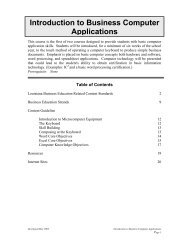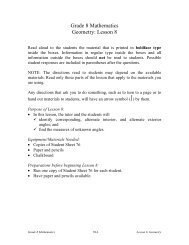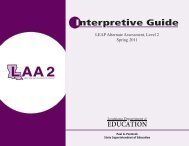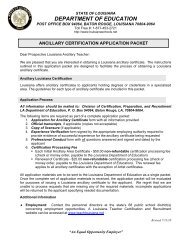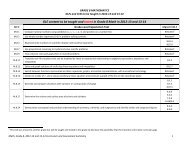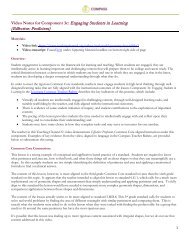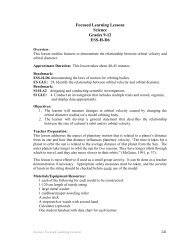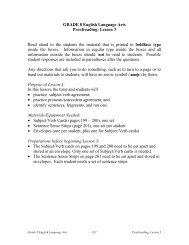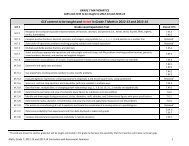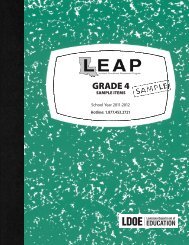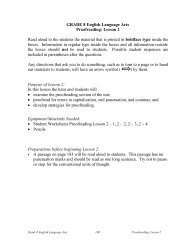School Improvement - Louisiana Department of Education
School Improvement - Louisiana Department of Education
School Improvement - Louisiana Department of Education
Create successful ePaper yourself
Turn your PDF publications into a flip-book with our unique Google optimized e-Paper software.
Criterion 5: Detailed Results That Allow for Replication<br />
The results <strong>of</strong> high quality studies are presented in sufficient detail to allow for their replication, or to at least<br />
provide opportunities to build systematically on their findings. To increase their usefulness to practitioners,<br />
research findings must be reported in a way that makes them easily accessible and understood. The informed lay<br />
reader should be able to understand the study’s design, methods, and findings.<br />
When evaluating the quality <strong>of</strong> research reporting, consider the following:<br />
• Are the findings clearly described and reported, free from technical terms and jargon?<br />
• Are the description <strong>of</strong> the design and the results <strong>of</strong> the research sufficiently detailed so that replication <strong>of</strong><br />
the design is possible? For example, do researchers report the sample size (number <strong>of</strong> people or schools<br />
involved) and the statistical procedures used?<br />
• Are the findings represented fairly and objectively?<br />
• Are technical aspects <strong>of</strong> the study, such as statistical significance or confidence intervals, made available<br />
and explained? Do the reports supply any supporting technical materials, perhaps in appendices?<br />
• Is the presentation balanced? That is, are shortcomings reported, as well as strengths? Were possible<br />
explanations provided for findings that ran counter to the researcher’s expectations?<br />
Criterion 6: Expert Scrutiny<br />
A strong study should be able to meet criticism by an independent panel <strong>of</strong> expert reviewers. Peer reviewers,<br />
either from scientific journals or from an independent panel <strong>of</strong> experts in a given field, provide quality control in<br />
the form <strong>of</strong> rigorous, objective, and scientific reviews <strong>of</strong> research. Research consumers can place more confidence<br />
in findings that have been subjected to expert review.<br />
When evaluating research, consider the following:<br />
• Has the research been accepted and published by a competitive, peer‐reviewed scientific journal, or was<br />
it reported only in media such as newspapers, magazines, or trade journals?<br />
• If the work was not published, is there evidence that it was reviewed by independent experts and<br />
subjected to external verification? If so, did the reviewers approve the study methodology and<br />
interpretation <strong>of</strong> the findings?<br />
Significance <strong>of</strong> effects:<br />
Before reformers make a final decision about the usefulness <strong>of</strong> available research findings, they must determine<br />
their significance. Even high‐quality research studies can produce findings that are not statistically or practically<br />
significant. Significance is a statistical term that helps readers to understand the likelihood that the findings <strong>of</strong> a<br />
study were the result <strong>of</strong> the designed intervention and would not be observed independent <strong>of</strong> that intervention.<br />
For practitioners, two standards <strong>of</strong> significance apply: statistical significance and educational, or practical,<br />
significance.<br />
For findings to be considered statistically significant, researchers should indicate in the study that the findings are<br />
“significant” at the .01 level (American Institutes for Research, 1999; Slavin & Fashola, 1998). In the social science<br />
research community, a .01 level <strong>of</strong> significance is highly regarded because it means that the positive results <strong>of</strong> the<br />
study would be the result <strong>of</strong> some unrelated cause only 1 time in 100 repetitions <strong>of</strong> the study’s procedures. Thus,<br />
a .01 level <strong>of</strong> significance indicates that the activities have led to the achievement gains reported.<br />
139



